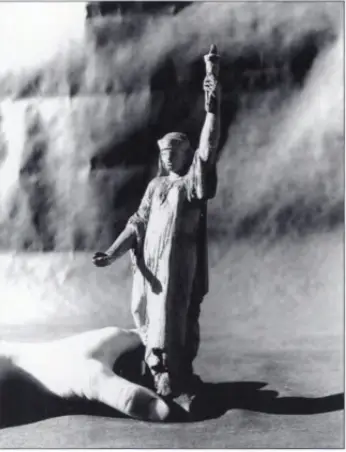The Statue of Liberty Was Inspired by an Arab Woman or Muslim Woman-Truth! & Fiction!
Summary of eRumor:
Sculptor Frédéric Auguste Bartholdi modeled the Statue of Liberty after a Muslim woman.
The Truth:
There are parallels between the Statute of Liberty and earlier plans for a statue of an Arab peasant woman by Frédéric Auguste Bartholdi — but historians have said that it’s an oversimplification to say that the Statue of Liberty was modeled after a Muslim woman.
Rumors that the inspiration for the Statue of Liberty was an Arab peasant woman began circulating in November 2015, but they took on new life after President Trump signed an executive order temporarily suspending immigration from seven Muslim-majority countries in early 2017. Claims that statue designer Frédéric Auguste Bartholdi’s inspiration for the Statue of Liberty was an Arab woman was held up as proof that Trump’s immigration ban was contrary to American values and ideals.
The Daily Beast was among the first to report that the Statue of Liberty was inspired by a Muslim woman at the height of the Syrian refugee crisis in 2015. In 2017, when Trump’s executive order on immigration again made refugees and immigration a topic of conversation PRI filed a similar report that was quickly picked up by other media outlets.
Politics aside, it’s true that a statue of an Arab peasant woman plays a prominent role in the State of Liberty’s origin story — but historical records indicate that it might be a bit of a stretch to say that the Statue of Liberty was inspired by Arab woman.
French designer Frédéric Auguste Bartholdi’s inspiration for the Statue of Liberty has been fairly well documented throughout history. Bartholdi’s first inspiration was a 110-foot statue of the Greek sun god Helios, commonly known as the “Colossus of Rhodes.” Author Barry Moreno writes in his book, “The Statue of Liberty,” that, “The Colossus of Rhodes influenced Bartholdi’s bold plans for the statue of Libertas. Like Helios, Libertas would stand at the entrance to a harbour, would hold aloft a lamp, and would have upon her head a nimbus (in the form of a spiked halo). But Helios stood only 110 feet high, while Libertas was to rise to a heigh of 151 feet 1 inch.
But the Colossus of Rhodes was also the inspiration for a previous statue that Bartholdi designed for a lighthouse at the approach of the Suez Canal: the Arab peasant woman. Moreno writes:
“Auguste Bartholdi’s first important venture into modeling a great monument in the tradition of the Colossus of Rhodes was called Egypt Carrying the Light to Asia. In 1867, the sculptor proposed building this colossus for the reigning Egyptian khedive, Isma’il Pasha. Taking the form a veiled Egyptian peasant woman, the statue was to stand 86 feet high, and its pedestal was to rise to a height of 48 feet. Fearing it would incur too great an expense, Isma’il Pasha rejected the offer in 1869.
Tabletop clay renderings of Bartholdi’s design for “Egypt Carrying the Light to Asia” bear a striking resemblance to the Statue of Liberty:

Edward Berenson writes one of the most comprehensive accounts of how Bartholdi’s Egyptian colossus transformed into Lady Liberty in his book, “The Statue of Liberty: A Transatlantic Story.” The transformation began in the fall of 1869:
Art Historians have found a series of sketches and clay models apparently done between the spring of 1870 and the spring of 1871 in which the Egyptian figure gradually became Roman and Greek. Whether Egyptian of neoclassical, all shared an up-streteched arm, usually but not always the right arm, holding a torch. The other arm is down by the waist. In some models, especially the Egyptian ones, the breasts are prominent. In other, they are barely visible. Ultimately Liberty emerged as far more androgynous than her khedival ancestor. And she left her Egyptian roots behind, she shed her North African dress for the draped garments of ancient Greece. Although the source of light ultimately shifted from her crown to her torch, sketches from the mid-1870s still show beams of light radiating from Liberty’s head. But by mid 1817, the statue’s headdress became a diadem with seven ray-like spokes, said to embody the Masonic symbolism of the enlightening sun. The rays projected outward toward the Earth’s seven continents. Other newly added elements included the broken chains of slavery trampled under Liberty’s feet and, to emphasize the point, another broken chain in her left hand.
Judging from historical accounts, the Colossus of Rhodes was Bartholdi’s inspiration for the Statue of Liberty and an earlier design of Arab peasant woman. So, while it’s true that the Arab peasant woman played a prominent role in the Statue of Liberty’s origin story — it’s not entirely accurate to say that the Statue of Liberty was inspired by a Muslim woman or an Arab woman. That’s why we’re calling this one Truth and Fiction.
